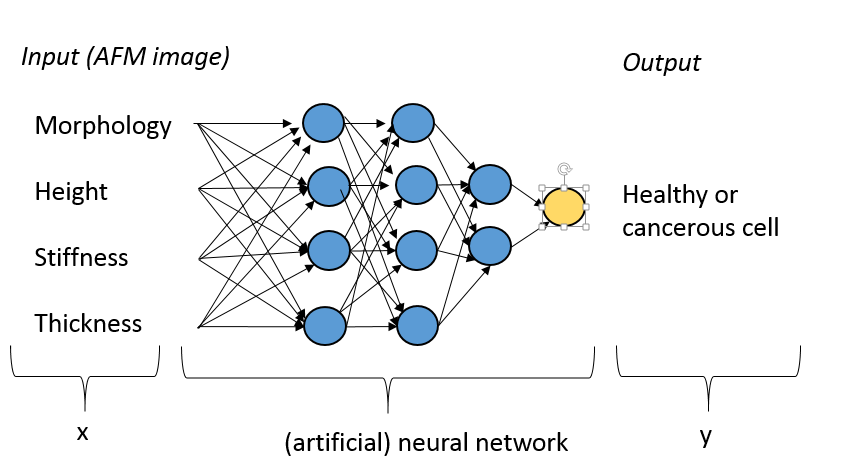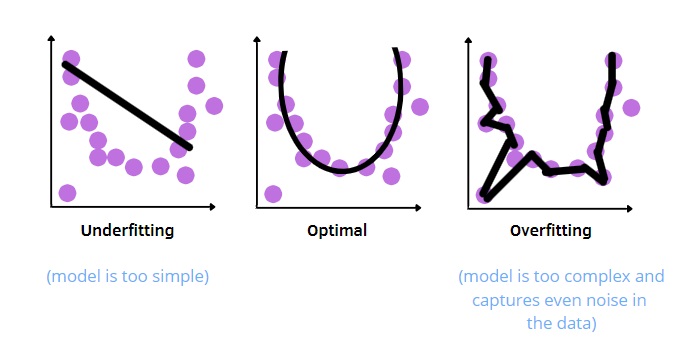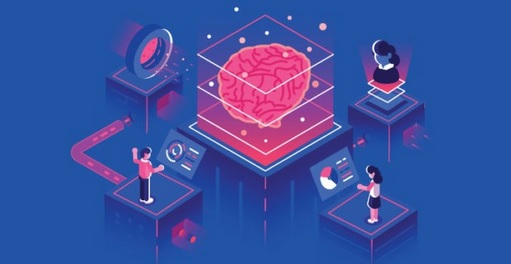I’m going to define a few buzzwords used in the field of artificial intelligence in this essay.
How deep learning and machine learning fit within the field of artificial intelligence. So in one sentence, here’s all you need to know: Artificial intelligence is a subset of machine learning, and deep learning is one of its more challenging subsets.
How does machine learning work? The broad term for when computers learn from data is machine learning. It explains how computer science and statistics come together. Algorithms in this sector carry out a given duty without being specifically coded. As new data come in, they instead identify patterns in the data and make predictions. According on the data used to feed the algorithms, the learning process for these algorithms can either be unsupervised or supervised.
For instance, linear regression is a straightforward classic machine learning approach. Consider calculating your salary based on the number of years you spent in higher school. You must define a function in the first stage, for instance: income = y plus x times years of experience. Then provide a set of training data to your algorithm. This may be a straightforward table providing information on the number of years of higher education certain people have and the income that goes along with it.
Next, allow your algorithm to draw the line, for instance, by an OLS regression. Now you can input some test data into the system, such your own years of higher education, and let it forecast your salary. Even though it seems straightforward, this qualifies as machine learning. And certainly, regular statistics are what powers machine learning. Without explicit programming, the system learned to forecast using only patterns and inference.
In summary, machine learning is the fusion of statistics and computer science. Computers acquire the ability to learn without being explicitly programmed using this method. Unsupervised learning and supervised learning are the two main kinds of machine learning issues. An OLS regression is an example of a machine learning algorithm.
Let’s now investigate how all of this relates to the concept of deep learning.

Deep Learning: What is it?
It is possible to think of deep learning algorithms as an advanced and theoretically challenging progression of machine learning algorithms. Because deep learning technology has been rapidly developing, this topic has recently attracted a lot of public attention.
Deep learning refers to algorithms that do data analysis using a logical framework akin to how a person would come to conclusions. Both supervised and unsupervised learning can achieve this. An Artificial Neural Network (ANN), a layered framework of algorithms, is what deep learning applications employ to do this. Such an ANN’s architecture is influenced by the biological neural network of the human brain, resulting in a learning process that is much more powerful than that of conventional machine learning models.
A basic artificial neural network is shown as follows: the input layer is on the left, the output layer is on the right, and the middle levels are known as hidden layers since their values cannot be seen in the training set. Hidden layers are the calculated values that the network uses to perform its miracles, to put it simply. A network is deeper the more hidden layers there are between the input and output layers. Deep neural networks are often defined as ANNs with two or more hidden layers.
Deep learning applications: Deep learning is utilized in a variety of industries. Deep learning is used, for example, in automatic driving to recognize pedestrians and stop signs. Consider Tesla’s use of deep learning algorithms to enable stop sign recognition in its vehicles. The ANN would first determine the relevant aspects, or properties, of the stop sign. Specific elements in the supplied image, such as points, edges, or objects, are referred to as features.
To find safe or risky areas for its troops, the military, for instance, utilizes deep learning to recognize things from satellites. Deep learning is also widely used in the consumer electronics sector. Deep learning algorithms are used by home assistant systems like Amazon Alexa to recognize your speech and respond to it. In a more conventional machine learning technique, the relevant features would need to be chosen by a software engineer, but the ANN performs autonomous feature engineering.
Depending on the geometry of the object we’re attempting to recognize, the first hidden layer may learn how to recognize edges, the second how to distinguish colors, and the third how to recognize more complex shapes. The deep learning algorithms would eventually learn from their own mistakes after being fed with training data, determining if the forecast was accurate or whether it needed to be adjusted.
 What a Neuron’s Actual Work in an ANN Looks Like
What a Neuron’s Actual Work in an ANN Looks Like
Overall, the deep learning algorithms require very minimal human input due to autonomous feature engineering and its self-learning characteristics. Although this demonstrates the enormous potential of deep learning, there are two key factors that explain why it has just lately become so useful: data accessibility and computational capacity.
First off, there are some notable exceptions to the rule that deep learning takes enormous volumes of data. For instance, Tesla’s autonomous driving program requires millions of photos and countless article hours to work effectively. Second, deep learning requires a lot of processing power. The time required to train a deep learning network could be cut down from weeks to only a few hours with the development of cloud computing infrastructure and powerful GPUs (Graphical Processing Units utilized for speedier calculations).
But the discovery of transfer learning, or the use of pre-trained models, is undoubtedly one of the most significant developments in the field of deep learning. Transfer learning might be seen as a solution to the ANN’s need for massive training data sets in order to provide meaningful results. In the past, ANN algorithms weren’t thought to be the best options for every problem due to their massive data requirements. However, employing pre-trained models can now meet this data need for many applications.
Deep learning and machine learning differ primarily in the following ways: If you have made it this far, you are undoubtedly aware that this is not the appropriate question to ask. Algorithms for machine learning are deep learning algorithms. Therefore, it might be wiser to consider what, specifically, in machine learning makes deep learning unique.
Differences Between Deep Learning and Machine Learning
The structure of the ANN algorithm, the minimal demand for human participation, and the need for massive amounts of data are the answers. First off, deep learning is based on an artificial neural network, whereas typical machine learning methods have a very simple structure, such as linear regression or a decision tree. This multi-layered ANN is like the human brain, complicated and interwoven.
Deep learning algorithms also require a lot less human input. Recall the Tesla illustration? If a more conventional machine learning approach were used for stop sign picture recognition, a software engineer would manually select features and a classifier to sort photographs, check to see if the output is what is needed, and modify the algorithm if necessary. But with a deep learning system, the features are automatically collected and the machine learns from its mistakes.
Because of its neural network, the deep learning algorithm can automatically engineer features without the aid of a software developer. Thirdly, compared to a conventional machine learning algorithm, deep learning needs a lot more data to work successfully. Due to its intricate multi-layer structure, deep learning systems frequently require a big dataset in order to read data accurately and remove oscillations, as opposed to machine learning, which can operate with 1,000 data points.
